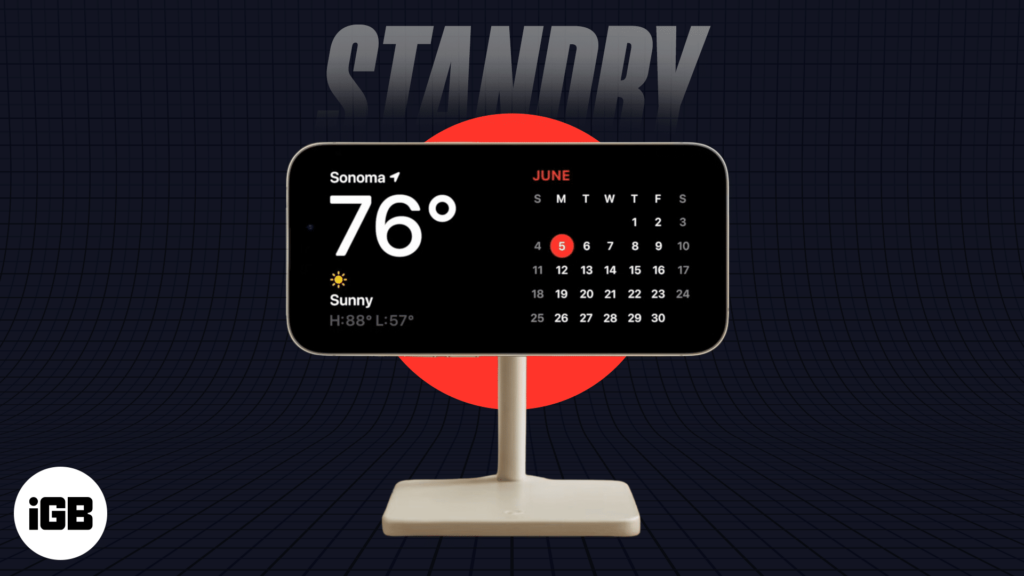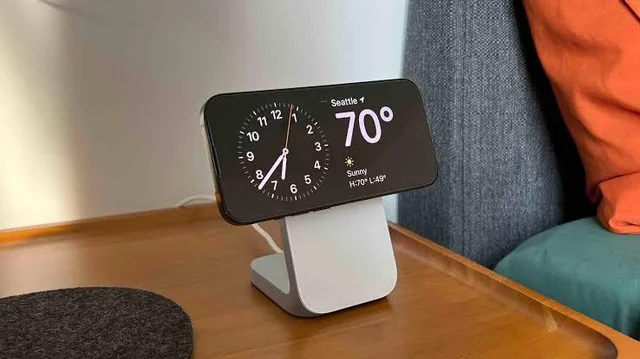If you’re constantly frustrated by your iOS device slipping into standby mode just when you need it most, fear not. There are several steps you can take to keep standby mode always on in iOS 17. From adjusting the settings to enabling persistence and customizing activation time, this discussion will guide you through the process of ensuring your device stays ready and available whenever you need it. But that’s not all – there’s an additional trick to enhance standby mode with low power mode. So, if you’re tired of interruptions and want to maximize your device’s standby capabilities, keep reading to discover how.
Adjusting Standby Mode Settings
To customize your standby mode settings in iOS 17, simply follow these steps. Standby mode, also known as sleep mode, is a power-saving feature that allows your device to conserve energy when it’s not in use. Unlike sleep mode, which completely turns off certain functions, standby mode keeps your device partially active, allowing it to quickly wake up when you need it.
There are several benefits to keeping standby mode on all the time. Firstly, it helps extend your device’s battery life. By reducing power consumption during periods of inactivity, standby mode ensures that your device can last longer on a single charge. Secondly, it allows for quick access to your device when you need it. Instead of waiting for your device to fully power up from sleep mode, standby mode enables you to quickly resume your activities. This is particularly useful when you only need to check a quick notification or perform a simple task. Lastly, standby mode helps to protect your device from unnecessary wear and tear. By minimizing the number of times your device needs to power on and off, it reduces the strain on its components, leading to a longer lifespan.

To adjust your standby mode settings in iOS 17, simply go to the settings menu, select ‘Display & Brightness,’ and then tap on ‘Auto-Lock.’ From there, you can choose the desired time interval for your device to enter standby mode. It’s important to find a balance that works for you, ensuring that your device is both ready for use when you need it and conserving energy when you don’t.
Enabling Standby Mode Persistence
To enable standby mode persistence on your iOS 17 device, follow these simple steps. Standby mode is an important feature that helps extend the battery life of your device by putting it into a low-power state when it is not in use. By enabling standby mode persistence, you ensure that your device stays in standby mode even when it is connected to a power source or being charged.
To enable standby mode persistence, go to the settings app on your iOS 17 device. Scroll down and tap on “Battery”. On the Battery page, you will find the option for “Standby Mode Persistence”. Simply toggle the switch to enable it.
Related: iOS 16.7.2 Pros and Cons
Enabling standby mode persistence has several benefits. Firstly, it allows your device to enter standby mode automatically whenever it is not being actively used, thus conserving battery power. This is especially useful when your device is connected to a power source, as it ensures that the battery is not unnecessarily drained. Additionally, by keeping your device in standby mode, you can quickly resume using it without any delay when you need to.
Disabling Automatic Standby Mode Deactivation
You can prevent automatic standby mode deactivation on your iOS 17 device by adjusting a few settings. By disabling this feature, you can ensure that your device stays in standby mode for as long as you need it to. Here are three reasons why you might want to consider disabling automatic standby mode deactivation:
- Troubleshooting standby mode issues: If you have been experiencing any problems with your device not entering standby mode when it should, disabling automatic standby mode deactivation can help you troubleshoot the issue. By keeping the standby mode always on, you can identify any underlying problems and find a solution.
- Impact of standby mode on battery life: Standby mode is designed to conserve battery life by putting your device in a low-power state when it’s not in use. However, automatic standby mode deactivation can disrupt this power-saving feature. By disabling it, you can maximize the battery life of your iOS 17 device and ensure that it stays charged for longer periods.
- Peace of mind: If you rely on your device for important tasks or notifications, keeping standby mode always on can provide peace of mind. You won’t have to worry about missing any important alerts or messages, as your device will always be ready and waiting for you.

Customizing Standby Mode Activation Time
Customize the activation time for standby mode on your iOS 17 device to suit your preferences and needs. Standby mode, also known as sleep mode, is a power-saving feature that allows your device to conserve battery when not in use. By customizing the activation time, you can control when your device enters standby mode, ensuring that it aligns with your usage patterns.
Understanding the difference between standby mode and sleep mode is crucial. Standby mode is a state where your device is still powered on but conserves energy by reducing background activities. Sleep mode, on the other hand, is a deeper power-saving state where your device suspends most operations. By customizing the activation time for standby mode, you can strike a balance between conserving battery life and maintaining device performance.
Customizing the activation time can have a significant impact on your device’s battery life and performance. If you set a shorter activation time, your device will enter standby mode more frequently, conserving battery but potentially interrupting background activities. Conversely, setting a longer activation time may minimize interruptions but may also consume more power. It’s important to find the right balance that suits your needs and helps optimize the overall performance of your iOS 17 device.
Using Low Power Mode With Standby Mode
When using low power mode in iOS 17, you can enhance the effectiveness of standby mode. By combining these two features, you’ll be able to maximize your battery life optimization and power saving techniques. Here are three ways low power mode can enhance standby mode:
- Reduced Background Activity: Low power mode limits background app refresh and mail fetch, reducing the overall power consumption of your device. This allows standby mode to work more efficiently by minimizing unnecessary background processes.
- Diminished Screen Brightness: Low power mode automatically reduces the brightness of your device’s screen. With a dimmer screen, standby mode can conserve even more power, ensuring your device stays in standby for longer periods.
- Optimized Performance: Low power mode throttles the processing power of your device, prioritizing power conservation over performance. By reducing unnecessary CPU usage, standby mode can fully utilize the limited power available, extending your device’s standby time.
Combining low power mode with standby mode in iOS 17 allows you to make the most of your device’s battery life optimization and power saving techniques. By implementing these strategies, you can ensure that your device stays in standby mode for longer, preserving battery power when you need it most.
How to Keep Standby Mode Always on in iOS 17 Video
Conclusion
Overall, keeping standby mode always on in iOS 17 can be achieved by adjusting the settings, enabling standby mode persistence, disabling automatic deactivation, and customizing activation time. Additionally, using low power mode alongside standby mode can further optimize your device’s battery life. By utilizing these features, iOS 17 users can ensure that their device remains in standby mode when not in use, maximizing efficiency and conserving power.